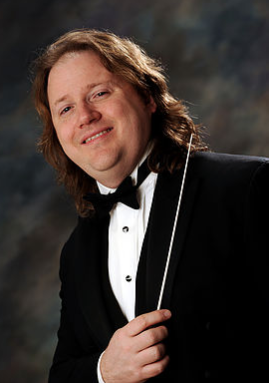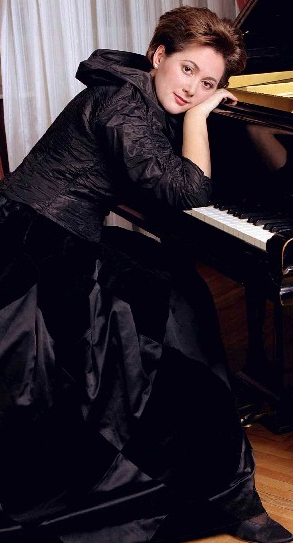Long Island Concert Orchstra
Jason Tramm, conductor; Julia Zilberquit, piano;
Good Shepherd Church, Lincoln Center, New York, NY
April 27, 2019
The Long Island Concert Orchestra (LICO) under Principal Guest Conductor Jason Tramm brought an all-Mozart program to the Good Shepherd Church near Lincoln Center this past weekend, playing three iconic works including the Piano Concerto in A major, K. 488 with pianist Julia Zilberquit. Though still a young group (founded in 2016), the orchestra is already faring well under the energizing baton of Mr. Tramm and the guidance of Executive Director, composer David Winkler.
The evening opened with a vibrant account of the ever-popular Overture to The Marriage of Figaro, a perfect choice to precede the A Major Concerto, which was composed the same year as that opera (and completed just weeks before the premiere of it). The rousing style of Mr. Tramm set a tone of excitement, and though the LICO ensemble is not large, their sound was robust. They transmitted its driving energy and established its sense of imminent drama. The harmonic foundations were well grounded by a superb double bassist who sounded like a full section by himself – perhaps with some help from the church’s live acoustics. The sizable audience applauded warmly.
Enter soloist Julia Zilberquit, with regal deportment and clad in brilliant sparkling silver. Hailing from Russia, she has established her credentials well, including solo performances with orchestra (American Symphony Orchestra and the Moscow Virtuosi, among others) and recordings on the Harmonia Mundi, Warner Classics, and Naxos labels. As Ms. Zilberquit has recorded the complete Bach Solo Keyboard Concertos, it did not seem like a stretch to expect from her the precision and detail required in a Mozart Concerto – and in general she did not disappoint.
The opening Allegro movement seemed off to a good orchestral start but there were some signs at the first solo entrance that there was not a true meeting of the minds, tempo-wise. Early on, some piano sixteenth notes seemed to run away, not quite dovetailing with the orchestra, and though this can often be the case near the opening of a concerto, the issue recurred. One is inclined to blame this (and some sketchy attacks and cutoffs) on acoustical issues. Synchronization can hard to achieve when articulations are obscured, and when rapid passagework tends to feature outlines and underpinnings; as a result, the need for more metric projection became clear, which tended to shackle even some solo passages (notably the imitative piano theme in the recapitulation). In any event, the musicians pulled it off, and the mastery in this magnificent piece shone through. Thankfully, Ms. Zilberquit chose to play Mozart’s own cadenza, bringing the movement to a fine closing tutti.
The profound Adagio movement (in the singular key of F-sharp minor) revealed much more about the pianist and her expressive style, and keen listeners were rewarded. Though the opening theme offers numerous expressive possibilities which were bypassed, Ms. Zilberquit turned out to be saving her expressive emphasis for the theme’s final measure, emerging as a player of long lines. It is always interesting, when reviewing, to need to revise one’s immediate reaction, and some of the most thought-provoking interpreters invite this retrospection. Ms. Zilberquit interpreted this movement with unique thoughtfulness. Her final Allegro was brimming with Mozart’s inimitable spirit, including very playful articulations towards the end. It was a delight!
Much to one’s surprise Ms. Zilberquit responded to the hearty ovation with not one but two encores. First, she played an arrangement announced as Bach Siciliano (the Largo from the Vivaldi-Bach Concerto in D minor, BWV 596). It was a stately offering, not unrelated to the siciliano elements of the Mozart slow movement. One was mystified, though, by her next selection, announced as a Shostakovich Waltz (the Lyrical Waltz from Shostakovich’s Dances of the Dolls), which had been given a “beefed-up” treatment complete with glissandi. It didn’t seem in keeping with what one had admired about her style in the Mozart.
The evening concluded after intermission with Symphony No. 40 in G Minor, K. 550. Accurately described by Charles Rosen as “a work of passion, violence, and grief,” this masterpiece is one of Mozart’s most loved and most frequently performed works. Mr. Tramm’s interpretation was simple, to let the music speak without resorting to any “novel “approaches, which was an intelligent choice. While one might have wished for more pathos in the opening movement, the net result was still compelling. The second movement Andante’s lyric qualities were brought forth with sensitivity. The third movement’s angry Menuetto was played with a good dose of agitation without lapsing into grotesqueness, while the trio, passed from strings to winds, cleared the storm clouds. The finale, launched with a “Mannheim rocket,” was played with vigor, bringing the evening to a successful close. The performance, to be sure, was not without some issues (notably balance and some cracked notes), but it showed the promise of good things to come from this orchestra.
The Long Island Concert Orchestra returns to the Good Shepherd Church for a program titled “Tango with Orchestra” on May 17, 2019.


